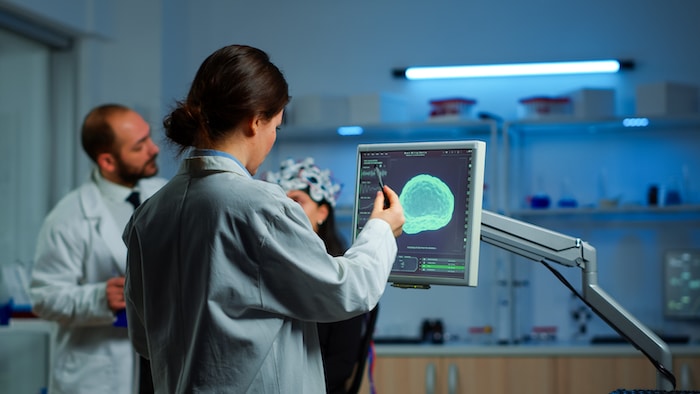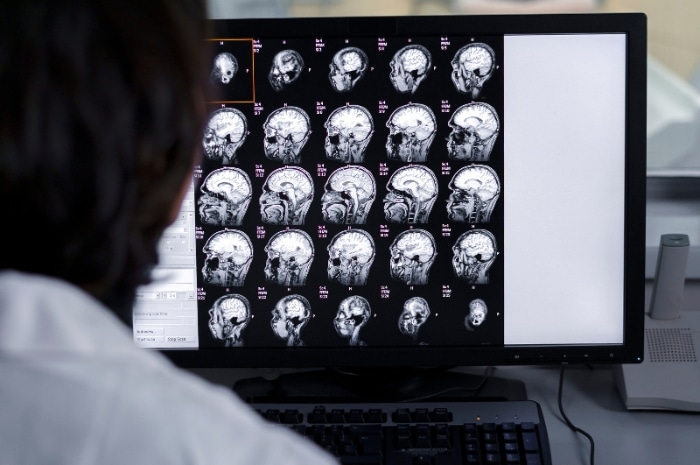4 min read
Unlocking the Power of Intraoperative Neuro-Monitoring: Enhancing Surgical Precision and Patient Safety
In modern medicine, enhancing surgical precision and patient safety is a top priority. One powerful tool that has revolutionized the field is intraoperative neuro-monitoring (IONM). By providing real-time data on the function of the nervous system during surgery, IONM allows surgeons to make more informed decisions, reducing the risk of complications and improving outcomes.
Through the use of electrodes, IONM measures and monitors various vital parameters, including sensory and motor responses, neural electrical activity, and blood flow. This invaluable feedback enables surgeons to navigate delicate procedures with greater accuracy, ensuring critical neural structures are preserved and minimizing the potential for neurological damage.
The benefits of IONM extend across various surgical specialties, from complex spine and brain surgeries to delicate procedures involving the peripheral nerves. By unlocking the power of IONM, surgeons are able to optimize their techniques, improve patient outcomes, and provide targeted, personalized care.
In this article, we will delve deeper into the world of IONM, exploring its capabilities, applications, and the positive impact it has had on surgical precision and patient safety. Join us as we explore this cutting-edge technology and discover how it is reshaping the future of surgery

The importance of IONM in surgical procedures
In the world of surgery, precision is key. Every decision made in the operating room can have a profound impact on the patient’s life. This is why intraoperative neuro-monitoring (IONM) has become a vital component of modern surgical procedures. By providing real-time feedback on the function of the nervous system, IONM enables surgeons to make critical decisions with confidence.
When performing a surgery, the surgeon’s primary goal is to remove or repair the affected tissue while minimizing damage to surrounding structures. However, the nervous system is intricately connected throughout the body, making it vulnerable to unintended injury during surgical procedures. IONM acts as a safeguard, allowing surgeons to monitor the functionality of the nervous system in real-time. By continuously assessing the integrity of neural pathways, IONM helps surgeons navigate delicate procedures with precision, reducing the risk of complications and improving patient outcomes.
How does IONM work?
IONM involves the use of specialized electrodes that are strategically placed on or near the nerves being monitored. These electrodes detect and record the electrical signals generated by the nervous system. The signals are then amplified, processed, and displayed on a monitor, providing the surgical team with valuable information about the integrity and functionality of the nerves.
There are several modalities used in IONM, each serving a specific purpose. Motor evoked potentials (MEPs) measure the electrical activity of muscles in response to stimulation of the motor cortex. Sensory evoked potentials (SEPs) evaluate the conduction of sensory signals along neural pathways. Electromyography (EMG) records the electrical activity of muscles, helping identify potential nerve injuries. Additionally, blood flow monitoring provides information on the perfusion of neural tissue during surgery.
The real-time data provided by IONM allows surgeons to make immediate adjustments to their techniques if any changes in neural function are detected. By preserving the integrity of the nervous system, IONM helps minimize the risk of postoperative complications and improve patient outcomes.

Advantages of using IONM in surgeries
The integration of IONM into surgical procedures has brought about numerous benefits for both surgeons and patients. One of the key advantages is the ability to identify potential nerve injury early on, allowing for prompt intervention and prevention of long-term damage. By monitoring the neural pathways in real-time, any changes in function can be immediately addressed, reducing the risk of postoperative complications such as paralysis, loss of sensation, or muscle weakness.
Furthermore, IONM provides surgeons with valuable information that enhances their decision-making process. By understanding the functional status of the nervous system during surgery, surgeons can tailor their techniques to minimize the risk of injury to critical neural structures. This leads to improved outcomes, shorter recovery times, and increased patient satisfaction.
In addition to its impact on surgical precision, IONM also plays a significant role in reducing healthcare costs. By preventing complications and the need for subsequent surgeries, IONM helps minimize the financial burden on patients and healthcare systems
Common applications of IONM
IONM finds its applications in a wide range of surgical procedures across various specialties. One of the most common areas where IONM is used is in spinal surgeries. The delicate nature of spinal procedures makes them particularly susceptible to nerve injury. By employing IONM, surgeons can accurately assess the integrity of the spinal cord and nerve roots, enabling them to make informed decisions during the surgery and minimize the risk of paralysis or other neurological complications.
Brain surgeries also benefit greatly from the use of IONM. Whether it’s tumor removal, epilepsy treatment, or deep brain stimulation, IONM provides surgeons with real-time feedback on the functional status of the brain and adjacent neural structures. This allows them to navigate complex procedures with precision, ensuring the preservation of critical brain functions and reducing the risk of postoperative neurological deficits.
Peripheral nerve surgeries, such as carpal tunnel release or nerve repair, also rely on IONM for enhanced precision and improved outcomes. By monitoring the electrical activity of peripheral nerves, surgeons can ensure accurate identification and preservation of nerve fibers, optimizing the success of these delicate procedures.
IONM technology advancements
Over the years, advancements in technology have significantly improved the capabilities of IONM systems. From the introduction of multi-channel monitoring to the integration of artificial intelligence algorithms, these advancements have revolutionized the field and further enhanced surgical precision and patient safety.
One notable advancement is the development of high-density electrode arrays, which allow for more comprehensive monitoring of neural activity. These arrays can capture signals from a larger number of nerves simultaneously, providing surgeons with a more detailed understanding of the functional status of the nervous system.
Additionally, the integration of artificial intelligence (AI) algorithms has led to the development of predictive models that can anticipate potential complications based on real-time data. By analyzing patterns and trends in neural activity, these models can alert the surgical team to potential issues before they manifest, allowing for early intervention and prevention of adverse outcomes.
The role of IONM in enhancing surgical precision
Surgical precision is of utmost importance when it comes to achieving optimal outcomes. Every surgical procedure involves a certain level of risk, and any unintended injury to critical neural structures can have lifelong consequences for the patient. IONM plays a crucial role in enhancing surgical precision by providing real-time feedback on the functional status of the nervous system.
By monitoring key parameters such as motor and sensory responses, neural electrical activity, and blood flow, IONM enables surgeons to make informed decisions during the surgery. For example, if a change in neural function is detected, the surgeon can adjust their technique or take immediate corrective action to minimize the risk of further damage. This level of precision ensures the preservation of critical neural structures, reducing the likelihood of postoperative complications and improving patient outcomes.
Conclusion: The future of IONM in surgical practice
Intraoperative neuro-monitoring (IONM) has revolutionized the field of surgery by providing real-time feedback on the function of the nervous system during surgical procedures. By enabling surgeons to make more informed decisions, IONM enhances surgical precision and improves patient safety.
With advancements in technology and ongoing research, the future of IONM looks promising. The integration of artificial intelligence algorithms, high-density electrode arrays, and predictive models will further enhance the capabilities of IONM systems, allowing for even greater precision and improved patient outcomes.
As the demand for surgical precision and patient safety continues to grow, IONM will play an increasingly vital role in modern surgical practice. By unlocking the power of IONM, surgeons can optimize their techniques, reduce complications, and provide targeted, personalized care. The future of surgery is being reshaped by the capabilities of IONM, and patients can expect safer, more precise procedures and better outcomes.
